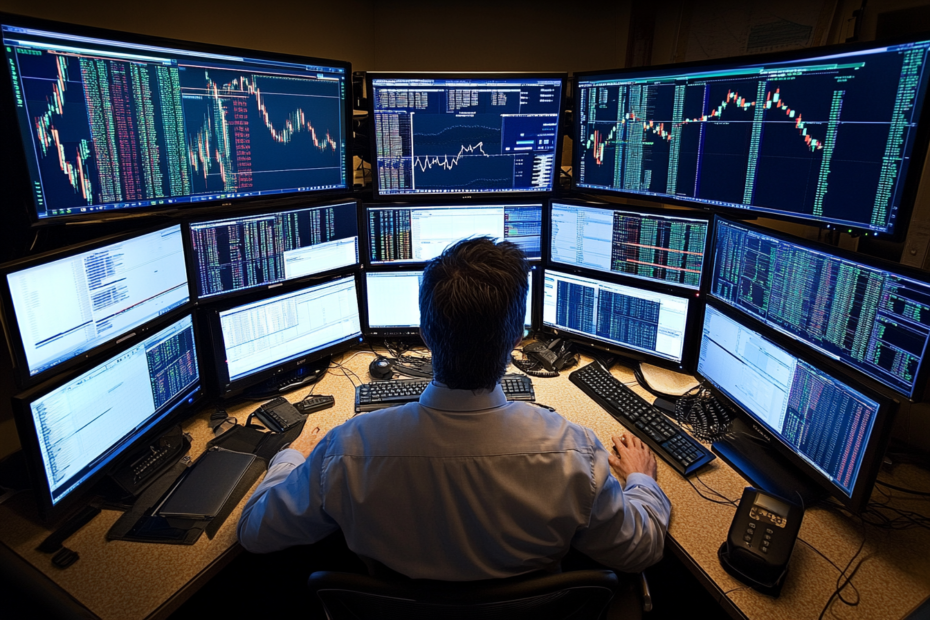Introduction to Prop Trading
Prop trading, short for proprietary trading, is one of the most lucrative career paths for traders looking to use a firm’s capital to trade financial markets. In prop trading, traders are granted capital from the firm, and in return, they are expected to generate profits while adhering to strict risk management protocols. Unlike traditional traders, prop traders do not need to invest their own money but instead use the firm’s resources, with profits shared between the trader and the firm based on predetermined agreements.
This comprehensive guide will take you through everything you need to know to succeed as a prop trader. From technical strategies to psychological mastery, risk management to scaling your career, we’ll cover each aspect in great detail, ensuring you are equipped with the knowledge and tools to thrive in the world of prop trading.
1. What is Prop Trading?
At its core, proprietary trading involves trading financial assets such as stocks, forex, futures, and options using a firm’s capital. Traders are given the freedom to explore and use various strategies as long as they adhere to the risk management policies set by the firm.
How Prop Trading Firms Operate
Prop firms provide traders with substantial capital, giving them more leverage than they would have with their own funds. In return, firms expect traders to maintain discipline and focus on profitability. Most firms have strict evaluation processes that traders must pass to qualify for a live trading account. These evaluations test the trader’s ability to manage risk, follow rules, and generate consistent profits.
Understanding Prop Trading Models
Prop trading firms operate on different models. Some offer fixed salaries plus profit-sharing, while others rely on a pure profit-sharing model. The latter is more common as it aligns the trader’s success with the firm’s goals.
2. Prop Trading Strategies: Foundations of Success
The Role of Technical Analysis in Prop Trading
Technical analysis is the bread and butter of most prop traders. By analyzing price charts, traders can identify trends, key levels of support and resistance, and potential reversal points. This helps in making informed decisions about when to enter or exit a trade.
For prop traders, the key to mastering technical analysis is to develop a deep understanding of chart patterns and price action. By recognizing formations like head and shoulders, triangles, and flags, you can anticipate market movements and plan your trades accordingly.
Developing a Personalized Trading Plan
Every successful prop trader operates with a well-defined trading plan. Your plan should outline your preferred strategies, risk tolerance, daily targets, and trading schedule. A trading plan is not static—it should evolve based on your performance and the changing dynamics of the markets.
3. Advanced Risk Management Techniques
Understanding Risk-Reward Ratios
The risk-reward ratio is a cornerstone of professional trading. At its simplest, the risk-reward ratio compares the potential profit of a trade with the potential loss. A 1:2 risk-reward ratio means that for every dollar risked, the trader expects to gain two dollars.
In prop trading, a favorable risk-reward ratio helps to ensure profitability even when the trader faces losses. Successful traders maintain ratios of at least 1:2, and many opt for even higher ratios to maximize profits over the long run.
Position Sizing and Stop-Loss Strategies
Effective position sizing helps traders control the amount of risk they take on each trade. By keeping position sizes proportional to account size, traders can prevent large drawdowns and maintain their evaluation accounts.
Stop-Loss Strategies: Placing stop-loss orders is one of the best ways to protect your account. A stop-loss ensures that if the market moves against your position, you exit the trade with a predetermined loss instead of letting it spiral out of control.
4. The Psychological Edge in Prop Trading
Mastering Emotional Discipline
Emotional discipline is the key to prop trading success. Fear and greed are two emotions that can ruin a perfectly good trading plan. Fear can prevent you from taking good trades, while greed can lead you to take unnecessary risks.
Prop traders must learn to manage these emotions by developing a system of checks and balances. For instance, sticking to your trading plan and risk management rules can help you stay grounded even when the market conditions are volatile.
Building Resilience: The Role of Mindset in Trading
The mental aspect of trading is often overlooked but is critical for long-term success. Traders who are mentally resilient can handle losses, stay patient, and avoid overreacting to short-term results.
5. Scaling Your Prop Trading Career
Transitioning from Prop Trader to Fund Manager
Once you’ve mastered prop trading, the natural progression is to take on more responsibility and eventually manage larger sums of money. Many prop traders evolve into fund managers, handling not only their own capital but also the capital of others.
By developing a strong track record and proving your consistency over time, you can attract investors and grow your trading business. It’s important to keep refining your strategies and risk management protocols as you scale your career.

